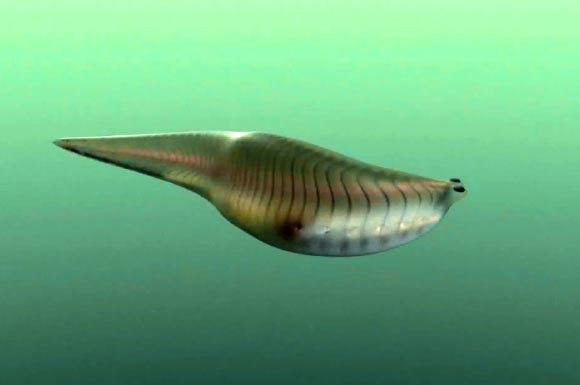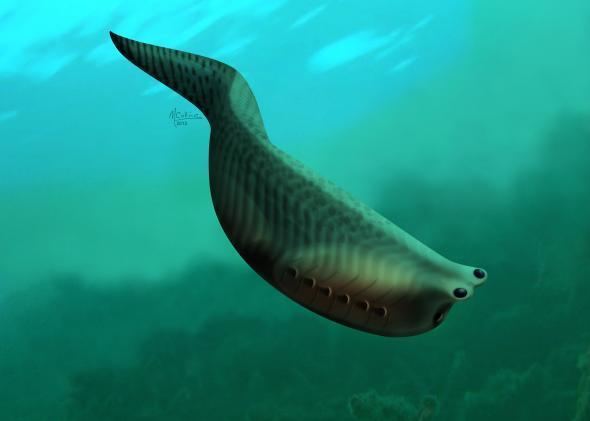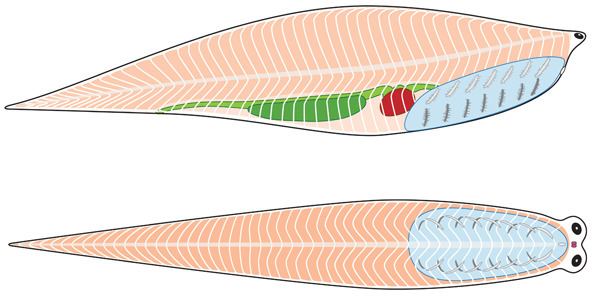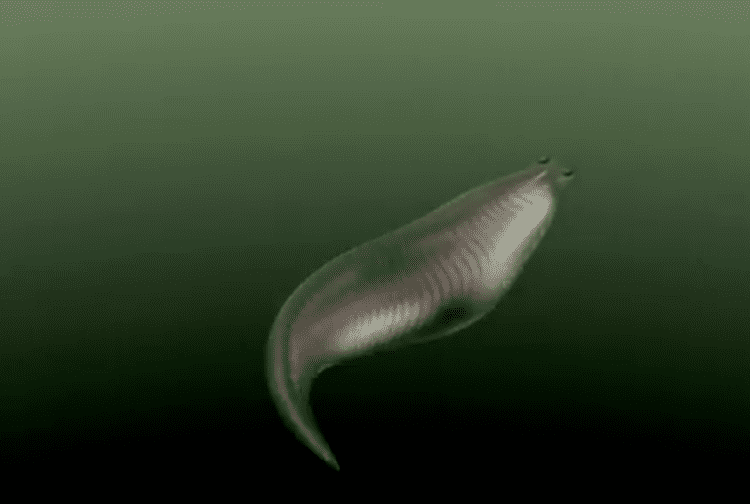Family Metaspriggiidae Scientific name Metaspriggina walcotti | Phylum Chordata Species M. walcotti Rank Genus | |
 | ||
Similar Myllokunmingia, Haikouichthys, Cathaymyrus, Pikaia, Haikouella | ||
Metaspriggina swimming
Metaspriggina is a genus of chordate initially known from two specimens in the Middle Cambrian Burgess Shale and 44 specimens found in 2012 at the Marble Canyon bed in Kootenay National Park.
Contents

Whilst named after the Ediacaran organism Spriggina, later work has shown the two to be unrelated. Metaspriggina is considered to represent a primitive chordate, possibly transitional between cephalochordates and the earliest vertebrates. It lacked fins and had a poorly developed cranium, but did possess two well-developed upward-facing eyes with nostrils behind them.

Metaspriggina also possessed a notochord, along with seven pairs of pharyngeal bars, possibly made of cartilage. The largest specimens are 10 centimetres (3.9 in) in length. Originally believed to be free-swimming but occasionally found on the sea floor, the fossils from Marble Canyon showing the presence of eyes and their placement suggests it lived as a filter-feeder swimming above the sea floor.

The exceptional preservation at Marble Canyon also preserved muscle detail, showing that the animal moved with a side-to-side swimming motion. In Metaspriggina the myomeral configuration has an additional ventral chevron, and a clear dorsal bend which defines a W-shaped arrangement that is directly comparable to fish.

The discovery of pharyngeal bars (gill bars) makes Metaspriggina the oldest known animal to have this feature. The first pair of pharyngeal bars later evolved to form the upper and lower jaws of vertebrates.

Metaspriggina swimcycle

